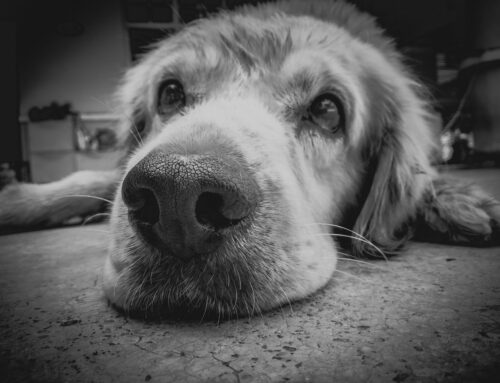Like people, dogs may suffer anxiety, which can take many forms. Dogs may experience anxiety for various reasons, including heredity, a lack of socialization, or being separated from their owners. Anxiety can be a normal reaction to stress or trauma. To know when their pets need assistance, pet owners must be able to detect anxiety symptoms in dogs.
Dogs who experience separation anxiety become upset when away from their owners. This is one of the most prevalent types of anxiety in dogs. Excessive barking, destructive behavior, pacing, and even self-harm are signs of separation anxiety. Lack of socializing, trauma, or changes in habit can all lead to separation anxiety, which can be challenging to deal with on your own.
What causes separation anxiety in dogs?
When dogs are removed from their owners, they frequently feel separation anxiety. To successfully avoid or treat the illness, dog owners should be informed of the many reasons for separation anxiety in dogs.
Lack of socializing during a dog’s crucial socialization stage primarily contributes to separation anxiety in canines. While removed from their owners, dogs that have not been exposed to various people, animals, and situations may experience anxiety or terror. For dogs to grow in self-assurance and resilience, which can help them handle difficult situations, socialization is essential.
Genetics is also another factor in dogs’ separation anxiety. Breeds more prone to anxiety and might develop separation anxiety include the Bichon Frise, Cocker Spaniel, and German Shepherd. Genetic predisposition should be considered when determining the likelihood that a dog would experience separation anxiety, genetic predisposition should be considered.
Routine changes and separation anxiety in dogs are both related. When there are significant changes in their routine, such as a transfer to a new house or a shift in their owner’s work schedule, dogs might get agitated and nervous since they depend on consistency. Following a consistent pattern can help owners reduce separation anxiety in their pets and make them feel safer.
Last, past traumatic events can also cause separation anxiety in dogs. Dogs subjected to abuse, neglect, or abrupt changes in their living circumstances may be more prone to separation anxiety. When their owners depart, these dogs may experience increased dread and anxiety.
How to tell if your dog has separation anxiety?
Many dogs suffer from the prevalent ailment of separation anxiety. Pet owners need to be aware of the symptoms to determine whether their dog is suffering from separation anxiety, pet owners need to be aware of the symptoms. The following are some typical signs of canine separation anxiety:
Excessive barking or howling: When left alone, separation-anxious dogs may bark or wail excessively. This behavior may indicate that your dog is worried and attempting to express their discomfort.
Destructive behavior: When left alone, dogs with separation anxiety may act destructively, such as gnawing on walls, doors, or furniture. This action may indicate that your dog is stressed out and trying to get away or find comfort.
House soiling: When left alone, dogs with separation anxiety may urinate or defecate within the home. This behavior may indicate that your dog is distressed and cannot regulate their bowel or urine motions.
Pacing or restlessness: Dogs with separation anxiety may pace or get agitated when left alone. This behavior may indicate your dog is frightened and trying to flee or find comfort.
Excessive salivation: Dogs with separation anxiety may drool excessively when left alone. This behavior may indicate that your dog is stressed and worried.
Escape attempts: When left alone, dogs that suffer from separation anxiety may try to escape from their crates, rooms, or homes. This behavior can indicate that your dog is worried and trying to locate you.
What types of dogs can develop separation anxiety?
Even though separation anxiety may affect any dog, regardless of breed or age, some breeds are more prone to it than others for various reasons, including genetic susceptibility, temperament, and behavioral features. Due to their gregarious, devoted, and friendly natures, dogs like Bichon Frise, German Shepherds, Cocker Spaniels, Labradors, Vizslas, and Toy Poodles are thought to be more prone to separation anxiety. They frequently develop close relationships with their owners, which can make it difficult for them to adjust to being alone.
For instance, Bichon Frises are friendly dogs that prefer being around people and might have separation anxiety if left alone for long periods. German Shepherds are witty and devoted canines, but extended separation from their owners can make them uncomfortable and worried. Cocker Spaniels are amiable dogs who can get agitated and anxious when left alone. Because of their high energy levels and need for exercise and attention, Labrador Retrievers are prone to separation anxiety when left alone for a long time. The friendly and devoted character of vizslas, who are clever and active canines, can make it challenging for them to handle being alone. Due to their high levels of socialization and enjoyment of time spent with their owners, toy poodles can get worried and agitated when left alone for an extended amount of time.
While some breeds may be more prone to separation anxiety, it is crucial to understand that any dog can experience the illness. Various additional variables, including socialization, past experiences, and changes in routine, can influence the emergence of separation anxiety in dogs. Regardless of their dog’s breed, pet owners should be aware of the symptoms of separation anxiety and take the necessary actions to treat or avoid the disease. Separation anxiety may be avoided, and a healthy relationship between dogs and their owners can be fostered via appropriate training, exercise, and positive reinforcement.
How to prevent separation anxiety in dogs?
When it comes to treating canine separation anxiety, prevention is crucial. Early socialization, gradual separation, a regular schedule, positive reinforcement, crate training, and continuous exercise can help dogs avoid separation anxiety. See a veterinarian or a trained dog behaviorist if you think your dog may suffer from separation anxiety for an accurate diagnosis and effective treatment.
How to treat separation anxiety in dogs?
Dog separation anxiety can be difficult to treat, but with determination and care, pet owners can assist their dogs in controlling their fear and living happy, healthy lives. Here are some recommendations for treating canine separation anxiety:
Desensitization: Desensitization is a method that gradually introduces your dog to anxiety-inducing cues. This method can assist your dog in overcoming anxiety and help them learn coping skills. Begin by only leaving your dog alone for brief durations, then progressively lengthen your absences.
Counterconditioning: The goal of counterconditioning is to alter your dog’s emotional reaction to the things that make them anxious. For instance, you may connect your leaving with pleasant memories like giving your dog food or toys.
Medication: In extreme situations, medication could be required to assist in treating separation anxiety symptoms. Antidepressants and anxiety drugs can ease anxiety in dogs and encourage calm.
Professional help: To properly diagnose and treat separation anxiety in dogs, speak with a veterinarian or a trained dog behaviorist. Based on the specific requirements of your dog, they may provide you with individualized treatment strategies.
Environmental enrichment: Environment enrichment for your dog can aid in lowering their anxiety. When you’re not home, your dog may be entertained and kept busy with toys, games, and interactive feeds.
Behavior modification: Positive reinforcement and clicker training are two behavior modification methods that may be used to change your dog’s behavior and lessen its fear. Your dog can learn positive behaviors and coping skills with consistent training and reinforcement.
Dog separation anxiety treatment demands perseverance, patience, and a tailored strategy based on your dog’s specific requirements. Dogs with separation anxiety might benefit from desensitization, counterconditioning, medication, expert assistance, environmental enrichment, and behavior modification strategies. For an accurate diagnosis and effective treatment of separation anxiety in dogs, pet owners should speak with a veterinarian or a trained dog behaviorist. Dogs with separation anxiety can enjoy happy and healthy lives with the proper care and treatment.





